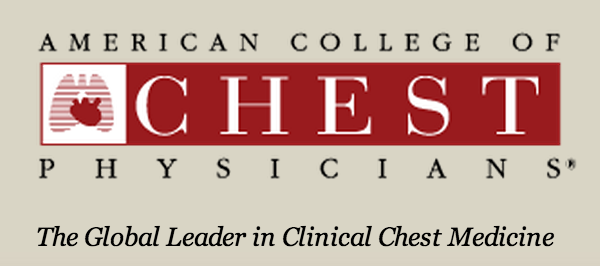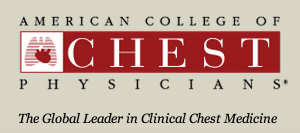Updated PAH Guidelines Released By The American College of Chest Physicians

 The American College of Chest Physicians (CHEST) has announced updates to its Pulmonary Arterial Hypertension guidelines in the online publication of “Pharmacological Therapy for Pulmonary Arterial Hypertension in Adults: CHEST Guideline” (Chest. 2014;145(5):1055-1063. doi:10.1378/chest.13-1864) in the journal CHEST.
The American College of Chest Physicians (CHEST) has announced updates to its Pulmonary Arterial Hypertension guidelines in the online publication of “Pharmacological Therapy for Pulmonary Arterial Hypertension in Adults: CHEST Guideline” (Chest. 2014;145(5):1055-1063. doi:10.1378/chest.13-1864) in the journal CHEST.
Pulmonary arterial hypertension (PAH) is a rare form of pulmonary hypertension that can strike anyone, but individuals with connective tissue diseases such as scleroderma, liver disease, or HIV infection, are more likely than the general population to have PAH. The new guidelines provide recommendations to help clinicians manage PAH using the latest drug therapies. The free access original research paper is coauthored by Darren B. Taichman, MD, PhD, FCCP (Chair); Joe Ornelas, MS, PhD(c); Lorinda Chung, MD, MS; James Klinger, MD, FCCP; Sandra Lewis, PhD; Jess Mandel, MD; Harold Palevsky, MD, FCCP; Stuart Rich, MD, FCCP; Namita Sood, MD, FCCP; Terence Trow, MD, FCCP; Rex Yung, MD, FCCP (GOC Liaison); C. Gregory Elliott, MD, FCCP; and David Badesch, MD, FCCP, representing the University of Pennsylvania, Philadelphia; the American College of Chest Physicians, Glenview, IL; Stanford University, Palo Alto, CA ; Brown University, Providence, RI ; the University of California, San Diego, CA; the University of Chicago, Chicago, IL; Ohio State University, Columbus, OH; Yale University, New Haven, CT; Johns Hopkins University, Baltimore, MD; Intermountain Medical Center and the University of Utah, Murray, UT); and the University of Colorado, Denver, CO.
[adrotate group=”4″]
The coauthors note that choices of pharmacological therapies for pulmonary arterial hypertension (PAH) are ideally guided by high-level evidence, and their research objective was to provide clinicians advice regarding pharmacologic therapy for adult patients with PAH as informed by available evidence. The new guideline is based on systematic reviews of English language evidence published between 1990 and November 2013, identified using the MEDLINE and Cochrane Library databases, and the strength of available evidence graded using the GRADE methodology.
Guideline recommendations, or consensus statements when available evidence was insufficient to support recommendations, were developed using a modified Delphi technique to achieve consensus. The researchers found that available evidence is limited in its ability to support high-level recommendations, so they consequently drafted consensus statements to address many clinical questions regarding pharmacotherapy for patients with PAH. A total of 79 recommendations or consensus statements were adopted and graded. They conclude that “clinical decisions regarding pharmacotherapy for PAH should be guided by high-level recommendations when sufficient evidence is available. Absent higher-level evidence, consensus statements based upon available information must be used. Further studies are needed to address the gaps in available knowledge regarding optimal pharmacotherapy for PAH.”
The full free-access article is available in PDF format at: https://journal.publications.chestnet.org/article.aspx?articleid=1881654
“Treatment of PAH has become a challenging field to keep abreast of due to the increasing number of medications and the large volume of data provided by the clinical studies responsible for their approval,” said guideline panelist, James R. Klinger, MD, FCCP, Professor of Medicine, Brown University, and PAH guideline topic editor, in a CHEST release. “The newly updated CHEST guidelines provide the clinician with a comprehensive approach to the medical management of adult patients with PAH.”
[adrotate group=”3″]
CHEST also notes that PAH is a condition in which the pulmonary arteries carrying blood from the heart to lungs become abnormally narrowed, causing blood pressure within the lungs to rise. The condition worsens over time and becomes life-threatening when the pressure in the pulmonary arteries rises high enough to put a strain on the heart. In addition, the diagnosis of PAH is frequently delayed due to the nonspecific nature of the symptoms.
Despite recent growth in therapeutic options, questions remain regarding pharmacological treatments. Pharmacological Therapy for Pulmonary Arterial Hypertension in Adults: CHEST Guideline contains 79 recommendations and expert consensus statements to aid clinicians in the management of PAH using the latest drug therapies for adults with the condition. The complete Pharmacological Therapy for Pulmonary Arterial Hypertension in Adults: CHEST Guideline is available in the June 17, 2014, Online First edition of the journal CHEST: https://bit.ly/PAHguideline.
“While these guidelines highlight the best options for treatment today, the process of creating these guidelines shines a light on the lack of sufficient evidence to support stronger recommendations. There are still considerable gaps in trials, research, and understanding the disease,” says Darren Taichman, MD, PhD, FCCP, Adjunct Associate Professor of Medicine, University of Pennsylvania and PAH guideline panel chair. “We hope the community of academic and industry-based researchers will choose carefully those studies that will answer the most important clinical questions so as to best use the limited but generous efforts of our patients, who risk their well-being as volunteer participants in clinical studies.”
For more information about CHEST, visit: https://chestnet.org
Sources:
The American College of Chest Physicians (CHEST)







